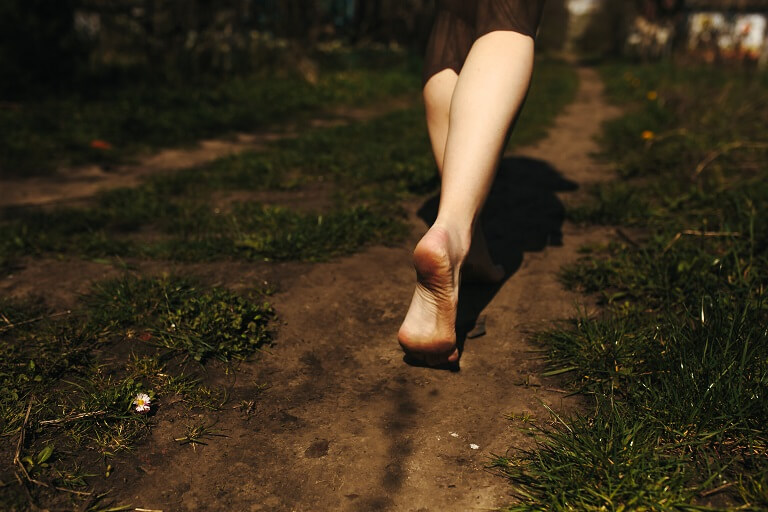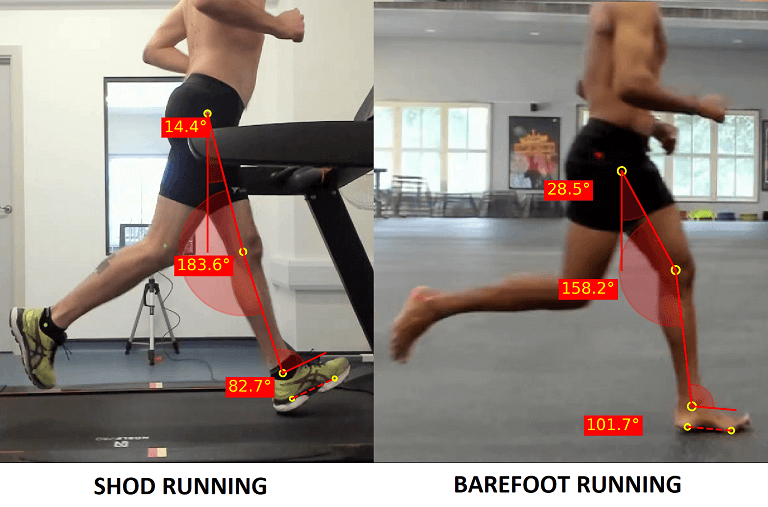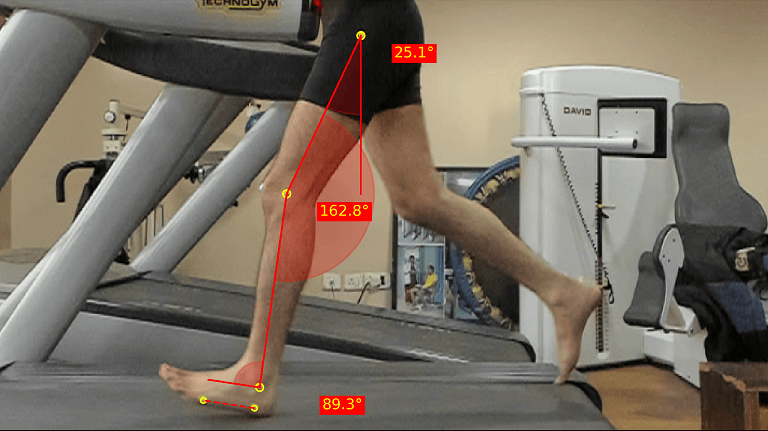
The last decade has witnessed a remarkable surge in barefoot running, due to the perceived benefits of reduced running-related injuries, a more “natural” running style, enhanced performance, and improved foot strength, proprioception, and shock absorption. Many of these beliefs stemmed from personal experiences and early clinical studies. [1]
Some reports suggest a surge in the trend after the publication of a book “Born to Run” authored by Christopher McDougall. [2,3]. It wasn’t long after this wave that minimalist footwear, designed to replicate barefoot mechanics, emerged as a popular alternative.
However, despite its initial popularity, the fervor for barefoot and minimalist running seems to have tapered off somewhat in recent years. One doesn’t hear about people advocating barefoot or minimalist shoes as much as it was being advocated around 5 years ago. One possible explanation for this decline could be the challenges of navigating unsuitable terrains without adequate protection. Additionally, some runners may have experienced injuries due to improper guidance or transitioning too quickly from traditional shoes to barefoot running.
Shod (Running with shoes) vs Barefoot Running [4,5]

Before understanding how to transition and address these issues, let’s delve into some significant changes of running Shod (with shoes) and barefoot (Without shoes)
Shod | Barefoot | |
Common Foot strike Pattern | Rearfoot | Mid or Forefoot |
Foot inclination angle at Initial contact | Increase dorsiflexion at IC | Increased Plantarflexion at IC |
Common Knee position at Intial Contact | Extended | Less extended than shod |
VerticaL GRF | Increased vertical GRF resulting in peak impact at the knee at initial contact | Relatively decreased peak vertical GRF. Loading on posterior calf musculature at initial contact |
Cadence | Lower than Barefoot due to decreased stride frequency | Increased than Shod due to increased stride frequency |
Is barefoot running superior to shod running?
As you read in the previous section, there are biomechanical changes between shod and barefoot running. Although, these changes are not consistent in all runners. There are shod runners who run with a forefoot strike and barefoot runners with a rearfoot strike. In spite of all the anecdotal experiences and the research done to study these differences, there is no conclusive evidence to suggest that barefoot running is superior to shod running and vice versa.

An image showing a barefoot runner with rearfoot strike
In fact, there are no changes in prevalence of running-related injuries between these two methods of running either. While shod-running related injuries are reduced with barefoot running, barefoot comes with its own set of injuries such as bruises, laceration, repetitive strain on achilles tendon and posterior calf, etc. [6]
The decision to transition to barefoot running is completely dependent on a person’s goals.
It can be taken up by anyone who wants to experiment with barefoot running, wants to feel more connected with the running surface, or feels more comfortable with barefoot running in general. From a rehabilitation point of view, one may benefit with barefoot running, to reduce impact forces on the knee and to functionally strengthen the foot and calf. This is largely with the assumption that barefoot runners will adopt a forefoot strike pattern
Steps to transition from shod to barefoot running
Transition Protocol [7,8]
There are 2 methods to transition –
1. Direct transition from shod to barefoot running
2. Transition from shod to minimalist shoes to barefoot running
|
Maximalist Shoes |
Minimalist Shoes |
|
|
Choosing the method will depend on how well the runner is tolerating the transition process. It is generally observed that transitioning to barefoot is better adhered to when there’s an intermediate step to training with minimalist shoes.
Pre-transition program checklist
1. Get a baseline assessment of running form – emphasis on foot strike pattern, cadence and stride length
2. Record running load and volume (No. of kms/day/week and pace)
3. Perform Preparatory strength, conditioning and mobility exercises
4. Re-assess running form after completing protocol
Total Transition time – 16-20 weeks
Preparatory exercises (Refer your healthcare practitioner/Physiotherapist to know exercises and dosage)
1. Ankle and foot mobility
2. Calf strengthening – Heel raises, toe raises
3. Stretches – Hamstring stretch, quads stretch, calf stretch
Protocol 1 - Shod Running - 4 weeks
Choose a shoe that is comfortable and suitable for a shod style of running. Prepare a regular running program for 4 weeks. (At Least 15 – 20 km running per week i.e. 3-4 x 5 km or 3-4 x 30 mins per week)
Protocol 2 - Transition from Shod to Minimalist Shoe running - 4 weeks
Week | Transition Protocol |
Week 1 | Throughout: Wear minimal shoes as much as possible during daily activities 3-4 days: 3-6 minutes minimal shoe running, 24-27 minutes shod running 3 days: stretching and self-massage |
Week 2 | 3-4 days: 8-12 minutes minimal shoe running, 18-22 minutes shod running 3 days: stretching and self-massage |
Week 3 | 2 days: 15 minutes minimal shoe running, 15 minutes shod running 2 days: 18-20 minutes minimal shoe running, 10-12 minutes shod running 3 days: stretching and self-massage |
Week4 | 1-2 day: 20-22 minutes minimal shoe running, 8-10 minutes shod running 2 days: 22-25 minutes minimal shoe running, 8-5 minutes shod running 2-3 days: stretching and self-massage |
* Stretching and self-massage can be done on the same day as a run.
Protocol 3 - Minimalist Shoe Running - 4 weeks
With minimalist or barefoot shoes, run the same volume as Protocol 1.
Protocol 4 - Transition from minimalist shoes to barefoot running - 4 weeks
Week | Transition Protocol |
Week 1 | Throughout: Be barefoot as much as possible during daily activities 3-4 days: 3-6 minutes barefoot running (2-3 minutes grass, 1-2 minutes pavement/road), 24-27 minutes minimalist shoe running 3 days: stretching and self-massage |
Week 2 | 3-4 days: 8-12 minutes barefoot running (5 minutes grass, 3-5 minutes pavement), 18-22 minutes minimalist shoe running 3 days: stretching and self-massage |
Week 3 | 2 days: 15 minutes barefoot running (5-10 minutes grass, 5-10 minutes pavement), 15 minutes minimalist shoe running 2 days: 18-20 minutes barefoot running (8-12 minutes grass, 8-12 minutes pavement), 10-12 minutes minimalist shoe running 3 days: stretching and self-massage |
Week4 | 1-2 days: 20-22 minutes barefoot running (5-10 minutes grass, 15-20 minutes pavement), 5-10 minutes minimalist shoe running 1-2 days: 22-25 minutes barefoot running (5 minutes grass, 20 minutes pavement), 5-8 minutes minimal shoe running 2-3 days: stretching and self-massage |
* Stretching and self-massage can be done on the same day as a run.
Protocol 5 - Barefoot Running - 4 weeks
Run Barefoot the same volume as Protocol 1.
At the end of the 4th week of this protocol, the transition to barefoot running will be complete.
These are general guidelines. For more tailored protocol, or if you’re facing any medical conditions, refer to a physiotherapist or a healthcare practitioner before starting the program.
Key points to consider
Foot Strength and Flexibility:
Gradually build up foot strength through exercises like toe curls, foot condtioning and barefoot walking.
Surface Selection:
Barefoot running is best practiced on soft, natural surfaces like grass, sand, or dirt trails. These surfaces provide more cushioning and allow the feet to adapt gradually to the new running style. Avoid hard, paved surfaces initially, as they can increase the risk of injury.
Patience and Gradual Progression:
Transitioning to barefoot running is a gradual process that requires patience and persistence. Rushing into it can lead to injuries such as plantar fasciitis, Achilles tendinitis, or stress fractures. Start with short, easy runs and gradually increase distance and intensity over several weeks or months.
Running form:
Avoid forcibly changing foot strike pattern (Eg, Rearfoot to forefoot strike) Follow the strike that comes naturally to the body
Identify Red Flags –
Temporarily stop the program if it leads to excess muscle soreness, joint pain, swelling, bruises or cuts on the sole of the foot, etc.
A gait analysis is a very useful tool to track your gait pattern throughout this process and iron out any biomechanical faults. GaitON offers a comprehensive 2-D Running analysis! To learn more about how GaitON can add value to your clinic, contact us today!
ABOUT THE AUTHOR

GAYATRI SURESH (PT)
Gayatri Suresh (PT) is a Biomechanist who has completed her B.P.Th from DES College of Physiotherapy and M.P.T (Biomechanics) from SRM College of Physiotherapy, SRMIST. Her field of clinical expertise is in movement assessments through video analysis. Apart from her work at Auptimo, she works as a Clinical Specialist at Rehabilitation Research and Device Development, IIT Madras. She has been conferred with gold medals for her Research presentations and for securing First rank with distinction in her MPT degree respectively
REFERENCES
- Jenkins, D. W., & Cauthon, D. J. (2011). Barefoot Running Claims and Controversies: A Review of the Literature. Journal of the American Podiatric Medical Association, 101(3), 231-246.
- https://en.wikipedia.org/wiki/Barefoot_running
- Craig Payne, Barefoot and minimalist running: The current understanding of the evidence, Revista Española de Podología, Volume 27, Issue 1, 2016, Pages e1-e3
- Perkins KP, Hanney WJ, Rothschild CE. The risks and benefits of running barefoot or in minimalist shoes: a systematic review. Sports Health. 2014 Nov;6(6):475-80. doi: 10.1177/1941738114546846. PMID: 25364479; PMCID: PMC4212355.
- Hall JP, Barton C, Jones PR, Morrissey D. The biomechanical differences between barefoot and shod distance running: a systematic review and preliminary meta-analysis. Sports Med. 2013 Dec;43(12):1335-53. doi: 10.1007/s40279-013-0084-3. PMID: 23996137.
- Altman, Allison R. PhD1; Davis, Irene S. PT, PhD2. Barefoot Running: Biomechanics and Implications for Running Injuries. Current Sports Medicine Reports 11(5):p 244-250, September/October 2012. | DOI: 10.1249/JSR.0b013e31826c9bb9
- MILLS, KATHRYN; COLLINS, NATALIE J.; VICENZINO, BILL. Transitioning to Barefoot Running Using a Minimalist Shoe Intermediary: A Prospective Cohort Study. Medicine & Science in Sports & Exercise 55(5):p 787-793, May 2023.
- Warne, J.P., Gruber, A.H. Transitioning to Minimal Footwear: a Systematic Review of Methods and Future Clinical Recommendations. Sports Med – Open 3, 33 (2017)